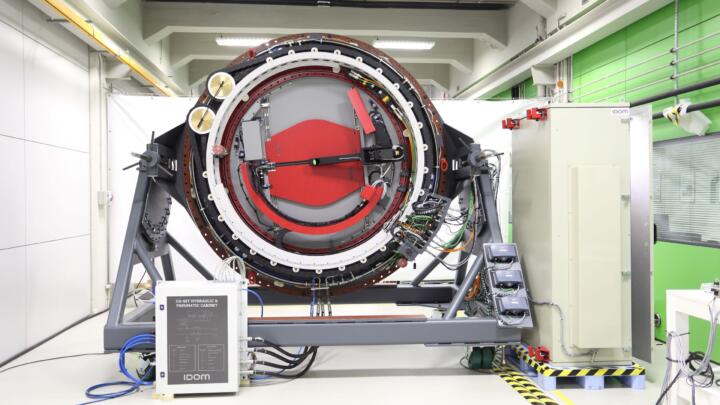
Looking deep into boundless expanses
Nowhere else in Europe is the night sky as dark and clear as it is when viewed from the Roque de los Muchachos ridge on La Palma which rises to a height of almost 2,500 meters (8,200 feet) and offers professional stargazers ideal research conditions thanks to the Atlantic island’s extremely low levels of light pollution. This remote location is home to a dozen impressive observatories offering astronomers and astrophysicists from different countries an infrastructure found almost nowhere else in the world.
I’m astounded by people who want to ‘know’ the universe when it’s hard enough to find your way around Chinatown
Woody Allen, American actor and director
Of the various observatories located on the Roque de los Muchachos ridge, the Gran Telescopio de Canarias (GTC) shown here stands out the most: With 36 reflectors and a diameter of 10.4 meters (34 feet), the silver-colored steel structure is one of the world’s largest reflecting telescopes. Opened in 2009 at a cost of 80 million euros and weighing around 300 metric tons (330 short tons), the GTC has already spotted more than 2,000 planets and discovered distant galaxies. Now new high-precision solutions from Schaeffler (see box below) are intended to make this view of the universe even sharper.
Schaeffler’s know-how for the view into space

Schaeffler Iberia contributed its specialist engineering expertise in the field of industrial drives and was involved in developing an instrument rotator for one of the GTC’s focal stations, known as the Cassegrain Focal Station (CG-Set). The instrument rotator is an important high-precision mechanism in the telescope and controls the focal tracking and rapid positioning system that rotates the two-ton telescopic camera with outstanding evenness throughout the entire observation in order to ensure its perfect alignment with the heavens from start to finish. IDOM, a Spanish company providing engineering and architecture services, was commissioned to develop this new CG set. Due to the positive experience during its long-standing collaboration with Schaeffler Iberia in various projects, IDOM decided to involve Schaeffler in the development of the instrument rotator drive. In this specific case, Schaeffler’s special drive solution not only had to ensure highly dynamic yet even camera guidance, it also had to feature a compact and lightweight design. Therefore, Schaeffler developed a segmented, slotless RMF torque motor (pictured). Due to this design, it is easy to transport, install and service, and also operates in a very energy-efficient way. Its special feature: the motor with a diameter of more than two meters (6.5 feet) is a proven drive concept from the field of machine tools that was adapted and built for a telescope.


